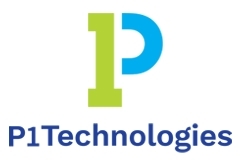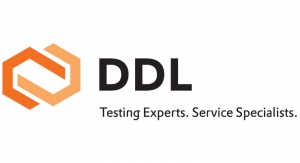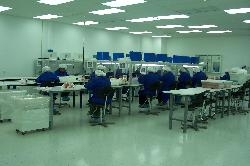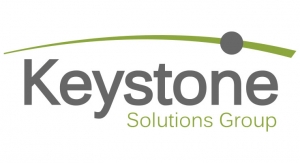Michael Barbella, Managing Editor08.03.21
Materials science has played a key role in the global battle against COVID-19.
Triiodide, salt, copper, nano-silver, polyimide, and graphene are just a few of the recruits drafted thus far in the 18-month coronavirus war. Sodium chloride, a natural anti-bacterial agent, is adept at filtering air and decontaminating surfaces, while copper “foam” can effectively capture tiny aerosol droplets carrying virus particles (diameters between 0.1 and 0.4 micrometers). Moreover, graphene has been used as a protective coating on face masks (the material’s sharp edges damage viruses), and Vyon porous plastic filters are helping a University of Cambridge (U.K.) spinout company diagnose COVID-19 infections in less than 90 minutes.
A research team at Northeastern University, meanwhile, has adopted a virus “mentality” to defeat SARS-CoV-2. The institution’s “Nano-Medicine Lab” created an injectable nano-molecular material that could prevent bacterial infection spread and also help reduce inflammation.
“What we are creating in the lab are molecules that are about 80,000 times smaller than the diameter of a strand of your hair,” Thomas Webster, the lab’s head, said in an interview posted on the school’s website. “In order to kill the viruses, you have to make a nano-meter material to disrupt their function.”
The technology Webster’s lab is researching as a potential coronavirus weapon actually was developed eight years ago as an injectable to help regenerate tissue and cartilage. The material was licensed by Concord, Mass.-based Audax Medical Inc. and has been commercialized for several regenerative medicine applications.
“We quickly hypothesized, when this COVID-19 situation came up,” Webster explained, “that these molecules are great at healing tissue, they’re great at reducing infections, exceptional at inhibiting inflammation that often comes from microbes, and perhaps it could be used to kill viruses.”
Such hypotheses were not uncommon over the last year as scientists, virologists, and medical professionals frantically searched for COVID-19’s molecular Achilles Heel. The pandemic, in fact, underscored the importance of materials science in developing tools and technologies for anti-viral research and treatment.
MPO’s March feature, Resourceful Resources, details the various pandemic response efforts of more than a half-dozen materials suppliers and manufacturers. The story also examines the challenges associated with developing wearable materials, and the impact AI and digital health has had on the space. Ursula Nollenberger, product line director at Trelleborg Healthcare & Medical, was among the experts interviewed for the story. Her full input is provided in the following Q&A.
Michael Barbella: How is digital health and AI impacting the development of medical device materials? Has it changed the kind of materials developed/used in devices?
Ursula Nollenberger: The key to digital health and the application of AI is reliable data. With this reliance on data, it’s imperative to have a dependable means of collecting it, which is increasingly being performed by implantable and wearable devices. This has led to demand for biocompatible and implantable material solutions which can provide additional functional and processing requirements, including antimicrobial properties, conductivity, tracing, adhesion, and lubrication. These fundamental material technologies already exist, partly due to their use in other industries, such as automotive.
Barbella: What challenges are associated with developing wearable products and how can these hurdles be overcome?
Nollenberger: To ensure comfort and error-free ease of use while minimizing restrictions on patients’ daily lives, devices are becoming smaller and smaller. This means features must be integrated as efficiently and robustly as possible. For example, electrically conductive silicones are becoming increasingly well-suited for implantable medical devices. And drug-eluting silicones can be used to transform a simple silicone part into a combination product. By combining elastomers, plastics, and even metal in a single manufacturing process, we create multi-component solutions that make assembly redundant and allow for the integration of various features. At Trelleborg Healthcare & Medical, we partner with device manufacturers, utilizing our expertise in engineering, materials, manufacturing, and automation to assist with product design, material selection, design for manufacture, and scale-up. We also provide support with state-of-the-art solutions like multi-component manufacturing.
Wearable devices, whether worn on skin or as a long-term implant, pose an increased risk and challenge of tissue irritation, inflammation, infection, and in the worst case, rejection. Silicones have decades of proven results as a preferred elastomeric choice. The wearable trend is also spurring further advancements in the offering of antimicrobial, anti-inflammatory solutions with silicones and other materials.
Barbella: In what ways has the global pandemic spurred material innovation?
Nollenberger: The fundamental material technologies to address healthcare needs existed prior to the pandemic. The pandemic has, however, triggered healthcare providers and OEMs to take a critical look at their supply chains to mitigate risks and shortages, which many providers experienced during the first wave of the pandemic. Having a global footprint and raw material supply base helps position manufacturers to meet industry needs.
Barbella: Organizations from outside the medtech industry pitched in at the start of the pandemic to help address the shortage of ventilators and PPE. What kind of impact did that have on the kinds of materials used for those products? Was/is there more flexibility with regard to the types of materials used for ventilators and PPE?
Nollenberger: When it comes to medical devices, there is one inviolable principle even under the most difficult circumstances—patient safety and device efficacy come first. There might be mechanisms to accelerate the process, such as the Emergency Use Authorization, but manufacturers and healthcare authorities still operate with the necessary diligence. Even in a crisis, rules and principles must not be suspended without care. In reality, we observe just the opposite. Regulatory changes in terms of updates to ISO 10993 and ISO 18562 for biocompatibility, as well as new MDR 2017/745 requirements, are still being followed.
Several Trelleborg manufacturing sites globally supported pandemic relief efforts through the production of PPE and respiratory equipment. In some cases, we simply increased or expedited production to customers whose products were critical to relief efforts. In other cases, we designed, tested and produced new equipment to fulfill healthcare needs. In all cases, we relied on our materials and manufacturing expertise to deliver products that met the applicable quality, regulatory and GMP requirements.
Barbella: What lessons from the pandemic will materials developers/suppliers carry forward in a post-COVID-19 world?
Nollenberger: The pandemic made it clear that supply continuity in the healthcare sector is even more important than in other business areas. It’s important to be prepared for these kinds of scenarios with a high-level of flexibility, internal risk management, and a strong financial backbone. Trelleborg Healthcare & Medical was fortunate that, when the pandemic hit, our global footprint enabled us to react quickly to market demand, shift manufacturing as needed, and ensure a continuity of supply for our customers. Redundant manufacturing on multiple continents for most of our processes, combined with a global material strategy of dual sourcing, enabled us to mitigate the risk of supply interruption in specific regions. This ability to manage pandemic-related supply chain issues simply reaffirms that our strategy is working.
Barbella: With the growing importance of sustainability and recyclability in the industry, can medtech materials be made more sustainable? If so, how?
Nollenberger: While sustainability is a legitimate and important building block in protection of the planet, the situation in the medical field is a bit more complex. Synthetic materials play a major role in medical devices because they help achieve more stable product quality and higher purity at the highest possible level of safety. However, manufacturers can use sustainable and renewable resources to get the synthetic material, while also focusing on recycling.
Even with silicones, the gold standard in biocompatibility, there is potential for improvement. We are constantly working with our chemists and suppliers to make the materials even safer. One recent result was the significant reduction of volatile organic compounds (VOCs), especially the cyclosiloxanes, both in the raw material and in the finished products. Another benefit is that silicones are produced from quartz sand, a material with almost infinite availability.
Furthering the sustainability effort, we are also starting to see a trend toward reusable versus single-use devices or components. Such devices require materials that prevent bacterial growth or can withstand multiple sterilization routines.
Barbella: Please discuss an instance (example) of an innovative material solution(s) your company came up with to meet challenging customer requests.
Nollenberger: With Trelleborg Healthcare & Medical being a materials processor rather than a principal raw materials developer, innovation from our side comes into play in the form of customized solutions in the individual application and device. In one example of a wearable drug pump, the challenge was in how to integrate multiple functions and requirements within the space and tolerance constraints of the small pump. The solution came in the form of optimizing the design using a multi-component LSR part, with the silicone material tailored to the specific needs of both application and process requirements.
Triiodide, salt, copper, nano-silver, polyimide, and graphene are just a few of the recruits drafted thus far in the 18-month coronavirus war. Sodium chloride, a natural anti-bacterial agent, is adept at filtering air and decontaminating surfaces, while copper “foam” can effectively capture tiny aerosol droplets carrying virus particles (diameters between 0.1 and 0.4 micrometers). Moreover, graphene has been used as a protective coating on face masks (the material’s sharp edges damage viruses), and Vyon porous plastic filters are helping a University of Cambridge (U.K.) spinout company diagnose COVID-19 infections in less than 90 minutes.
A research team at Northeastern University, meanwhile, has adopted a virus “mentality” to defeat SARS-CoV-2. The institution’s “Nano-Medicine Lab” created an injectable nano-molecular material that could prevent bacterial infection spread and also help reduce inflammation.
“What we are creating in the lab are molecules that are about 80,000 times smaller than the diameter of a strand of your hair,” Thomas Webster, the lab’s head, said in an interview posted on the school’s website. “In order to kill the viruses, you have to make a nano-meter material to disrupt their function.”
The technology Webster’s lab is researching as a potential coronavirus weapon actually was developed eight years ago as an injectable to help regenerate tissue and cartilage. The material was licensed by Concord, Mass.-based Audax Medical Inc. and has been commercialized for several regenerative medicine applications.
“We quickly hypothesized, when this COVID-19 situation came up,” Webster explained, “that these molecules are great at healing tissue, they’re great at reducing infections, exceptional at inhibiting inflammation that often comes from microbes, and perhaps it could be used to kill viruses.”
Such hypotheses were not uncommon over the last year as scientists, virologists, and medical professionals frantically searched for COVID-19’s molecular Achilles Heel. The pandemic, in fact, underscored the importance of materials science in developing tools and technologies for anti-viral research and treatment.
MPO’s March feature, Resourceful Resources, details the various pandemic response efforts of more than a half-dozen materials suppliers and manufacturers. The story also examines the challenges associated with developing wearable materials, and the impact AI and digital health has had on the space. Ursula Nollenberger, product line director at Trelleborg Healthcare & Medical, was among the experts interviewed for the story. Her full input is provided in the following Q&A.
Michael Barbella: How is digital health and AI impacting the development of medical device materials? Has it changed the kind of materials developed/used in devices?
Ursula Nollenberger: The key to digital health and the application of AI is reliable data. With this reliance on data, it’s imperative to have a dependable means of collecting it, which is increasingly being performed by implantable and wearable devices. This has led to demand for biocompatible and implantable material solutions which can provide additional functional and processing requirements, including antimicrobial properties, conductivity, tracing, adhesion, and lubrication. These fundamental material technologies already exist, partly due to their use in other industries, such as automotive.
Barbella: What challenges are associated with developing wearable products and how can these hurdles be overcome?
Nollenberger: To ensure comfort and error-free ease of use while minimizing restrictions on patients’ daily lives, devices are becoming smaller and smaller. This means features must be integrated as efficiently and robustly as possible. For example, electrically conductive silicones are becoming increasingly well-suited for implantable medical devices. And drug-eluting silicones can be used to transform a simple silicone part into a combination product. By combining elastomers, plastics, and even metal in a single manufacturing process, we create multi-component solutions that make assembly redundant and allow for the integration of various features. At Trelleborg Healthcare & Medical, we partner with device manufacturers, utilizing our expertise in engineering, materials, manufacturing, and automation to assist with product design, material selection, design for manufacture, and scale-up. We also provide support with state-of-the-art solutions like multi-component manufacturing.
Wearable devices, whether worn on skin or as a long-term implant, pose an increased risk and challenge of tissue irritation, inflammation, infection, and in the worst case, rejection. Silicones have decades of proven results as a preferred elastomeric choice. The wearable trend is also spurring further advancements in the offering of antimicrobial, anti-inflammatory solutions with silicones and other materials.
Barbella: In what ways has the global pandemic spurred material innovation?
Nollenberger: The fundamental material technologies to address healthcare needs existed prior to the pandemic. The pandemic has, however, triggered healthcare providers and OEMs to take a critical look at their supply chains to mitigate risks and shortages, which many providers experienced during the first wave of the pandemic. Having a global footprint and raw material supply base helps position manufacturers to meet industry needs.
Barbella: Organizations from outside the medtech industry pitched in at the start of the pandemic to help address the shortage of ventilators and PPE. What kind of impact did that have on the kinds of materials used for those products? Was/is there more flexibility with regard to the types of materials used for ventilators and PPE?
Nollenberger: When it comes to medical devices, there is one inviolable principle even under the most difficult circumstances—patient safety and device efficacy come first. There might be mechanisms to accelerate the process, such as the Emergency Use Authorization, but manufacturers and healthcare authorities still operate with the necessary diligence. Even in a crisis, rules and principles must not be suspended without care. In reality, we observe just the opposite. Regulatory changes in terms of updates to ISO 10993 and ISO 18562 for biocompatibility, as well as new MDR 2017/745 requirements, are still being followed.
Several Trelleborg manufacturing sites globally supported pandemic relief efforts through the production of PPE and respiratory equipment. In some cases, we simply increased or expedited production to customers whose products were critical to relief efforts. In other cases, we designed, tested and produced new equipment to fulfill healthcare needs. In all cases, we relied on our materials and manufacturing expertise to deliver products that met the applicable quality, regulatory and GMP requirements.
Barbella: What lessons from the pandemic will materials developers/suppliers carry forward in a post-COVID-19 world?
Nollenberger: The pandemic made it clear that supply continuity in the healthcare sector is even more important than in other business areas. It’s important to be prepared for these kinds of scenarios with a high-level of flexibility, internal risk management, and a strong financial backbone. Trelleborg Healthcare & Medical was fortunate that, when the pandemic hit, our global footprint enabled us to react quickly to market demand, shift manufacturing as needed, and ensure a continuity of supply for our customers. Redundant manufacturing on multiple continents for most of our processes, combined with a global material strategy of dual sourcing, enabled us to mitigate the risk of supply interruption in specific regions. This ability to manage pandemic-related supply chain issues simply reaffirms that our strategy is working.
Barbella: With the growing importance of sustainability and recyclability in the industry, can medtech materials be made more sustainable? If so, how?
Nollenberger: While sustainability is a legitimate and important building block in protection of the planet, the situation in the medical field is a bit more complex. Synthetic materials play a major role in medical devices because they help achieve more stable product quality and higher purity at the highest possible level of safety. However, manufacturers can use sustainable and renewable resources to get the synthetic material, while also focusing on recycling.
Even with silicones, the gold standard in biocompatibility, there is potential for improvement. We are constantly working with our chemists and suppliers to make the materials even safer. One recent result was the significant reduction of volatile organic compounds (VOCs), especially the cyclosiloxanes, both in the raw material and in the finished products. Another benefit is that silicones are produced from quartz sand, a material with almost infinite availability.
Furthering the sustainability effort, we are also starting to see a trend toward reusable versus single-use devices or components. Such devices require materials that prevent bacterial growth or can withstand multiple sterilization routines.
Barbella: Please discuss an instance (example) of an innovative material solution(s) your company came up with to meet challenging customer requests.
Nollenberger: With Trelleborg Healthcare & Medical being a materials processor rather than a principal raw materials developer, innovation from our side comes into play in the form of customized solutions in the individual application and device. In one example of a wearable drug pump, the challenge was in how to integrate multiple functions and requirements within the space and tolerance constraints of the small pump. The solution came in the form of optimizing the design using a multi-component LSR part, with the silicone material tailored to the specific needs of both application and process requirements.



















